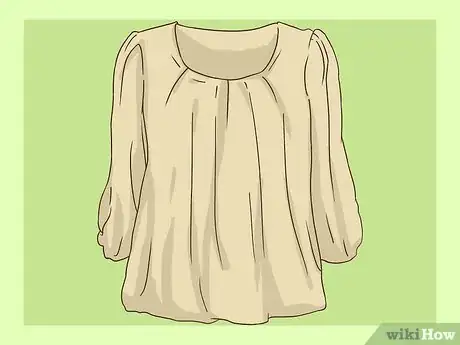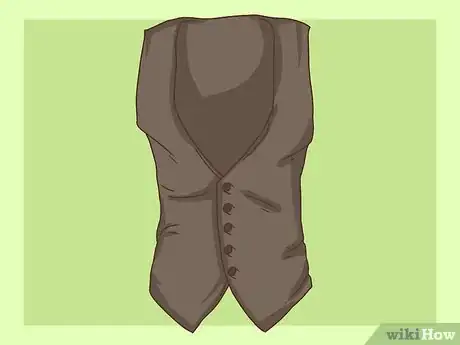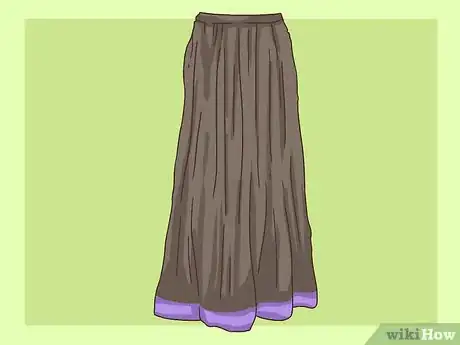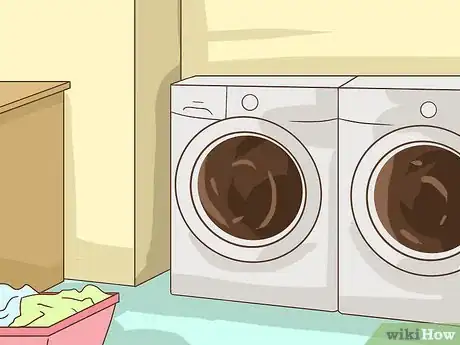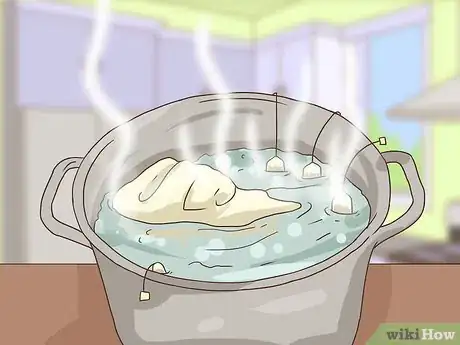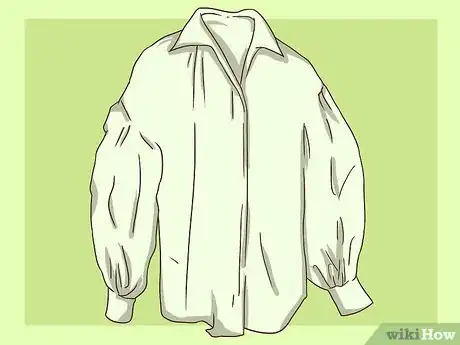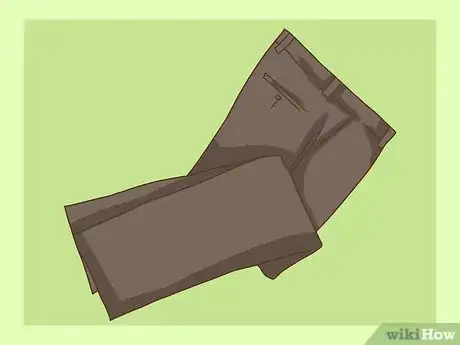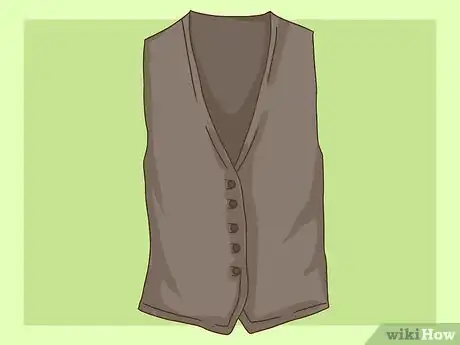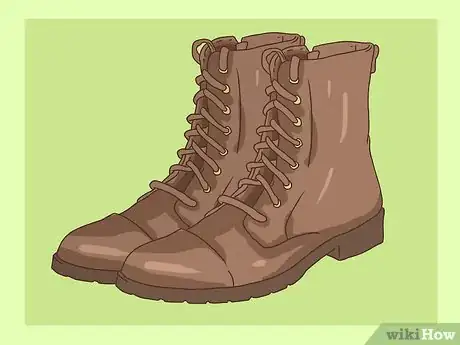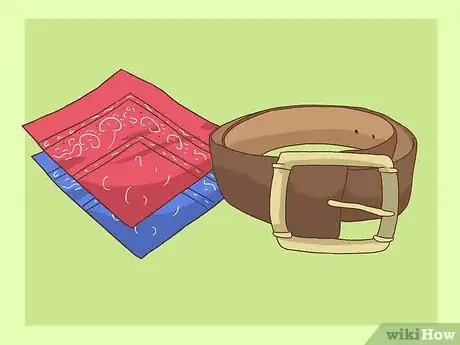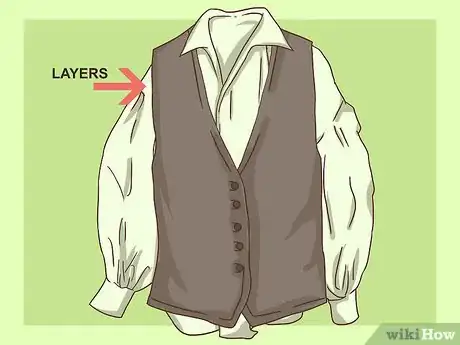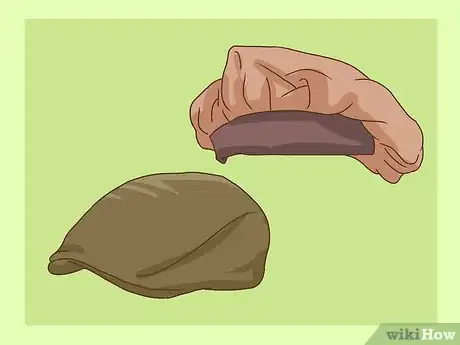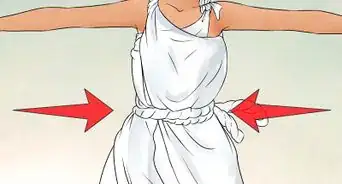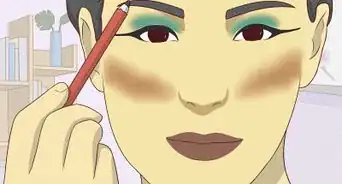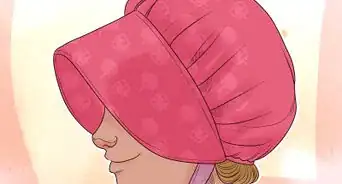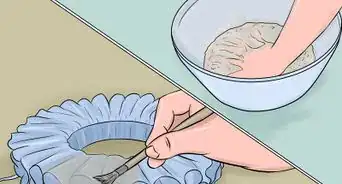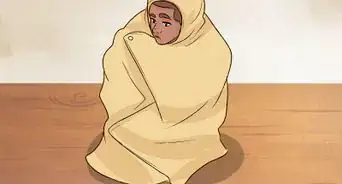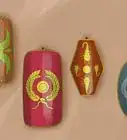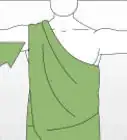This article was co-authored by Alina Bokovikova. Alina Bokovikova is a Costume Designer from California. With over 15 years of experience, she specializes in designing costumes for stage productions. Alina earned an MFA in Costume Design from the University of California, San Diego and her Master of Education from the Novosibirsk Pedagogical University. She’s won two Outstanding Costume Design awards and her costumes have been displayed in Moscow, Prague, and San Jose, California.
wikiHow marks an article as reader-approved once it receives enough positive feedback. In this case, 85% of readers who voted found the article helpful, earning it our reader-approved status.
This article has been viewed 142,732 times.
Purchasing proper Renaissance garb can be expensive, so often it's much more economical to make garb yourself through some clever thrifting. Not only that, when you make garb yourself, you get to be much more creative with it, and you'll have something that's uniquely yours. Thrifting for your garb can also be way more fun than purchasing a full, already complete outfit.
Things You Should Know
- For women’s garb, go thrift shopping for a loose long-sleeved blouse, a vest resembling a bodice, and a long skirt that reaches your ankles.
- For men’s garb, find a baggy off-white pirate shirt, dark trousers, a vest, and boots.
- Add accessories like leather belts, sashes, pouches, bandanas, and an old-fashioned hat to your ensemble.
Steps
Making a Thrifted Female Garb
-
1Find a blouse. First, go to a thrift store near you. The basic female Renaissance garb is the wenches outfit, and the top portion will consist of a blouse and a bodice. For the blouse, you want to look for something long sleeved and plain. For the best look, go for something light colored, preferably white or off-white.[1]
- When it comes to fabrics, if you want to be more authentic looking, try to find completely natural fabrics, or blends with small amounts of polyester. Common fabrics used in Renaissance fashion include wool, cotton, leather, and linen. Fabrics like silk, satin, and velvet were reserved for the upper classes.
- Women can use poet shirts instead of blouses as well. Poet shirts are baggy shirts with large long sleeves. Stick to the same fabric and color guidelines as the blouse.[2]
-
2Look for a vest that can be made into a bodice. For the bodice, you want to look for a sleeveless button up top or a vest. The bodice has more flexibility when it comes to color. Stick to earthy, muted tones, and avoid bright colors, especially purple, as that was reserved for royalty.[3]Advertisement
-
3Find a skirt or fabric that can be made into a skirt. Women in the Renaissance wore long skirts that went down to their ankles. Look for one in a muted, earthy color, like brown, olive green, or off-white.
- Two skirts is better than one, if you can find two, as it adds more texture and shape to the garb. Make sure their colors don't clash.[4]
- Alternatively, you can look for a dress, rather than a skirt and blouse. Just make sure the dress goes down to ankle or floor level, and isn't in a loud color or modern fabric.
-
4Wash everything. Throw everything you thrifted for your garb into the wash. Let them get and stay a little wrinkled to make them look more worn in.[5]
-
5Alter the tops optionally. You can wear the blouse and the vest as is, or you can alter them to look more Renaissance-like.[6] Here are some ideas:
- If you got a white blouse and you want to make it less bright white, you can throw it in a pot of boiling water with some tea bags. Let it sit for five minutes. Then throw it in the dryer.
- Renaissance women wore low necklines, so if the blouse has a neckline that's too high, you can cut it down to size. Lay it out flat then mark where you want the new neckline with a pencil. Cut it carefully, then stitch the new neckline with either a thread that matches the color of the blouse or something like olive green or brown.
- You can do the same with the vest or button up sleeveless top. The over blouse should have a little lower neckline so that the neckline of the blouse shows through.
-
6Add some basic leather sandals or flats. When it comes to the shoes, they should be plain and leather. Flats or sandals will work, as long as they're as simple as you can find.
Making a Thrifted Male Garb
-
1Find a shirt. Lower class men in the Renaissance often wore what's called a poet shirt. This is a baggy shirt with large long sleeves, almost always white or off-white. Think of a classic pirate shirt. Look for one made of a natural fabric like cotton or linen.
- You can choose a different color if you want. Brown and olive green work well.
- Instead of a poet shirt, you can opt for a tunic if you wish. These are long-sleeved shirts that go lower than normal shirts. Look for something in a natural color and of a natural material.
- To create an authentic-looking Renaissance costume, pick fabrics and colors that resemble materials from the 16th to 17th century.
-
2Look for pants. You might already own some cotton trousers that will work for the garb. If not, look for some in a dark color, dark brown or black. They should be long enough to tuck into boots. Fabric is the most important factor here. They didn't have denim back then, and plain khaki pants won't look right either. Look for a light fabric, preferably cotton or linen, or something that looks like cotton or linen.[7]
- Alternatively, you can look for pants that come down to just past or just above the knee. If you can sew elastic into the openings to make them resemble bloomers, even better.
-
3Find a vest. The vest will make your basic male garb complete, besides the shoes and accessories. The vest should be dark colored like the pants, and simple and plain.[8]
- A leather vest would be ideal, but you have a lot of freedom with fabrics here, so just look for something that you like the look of.
-
4Get some boots. Boots will complete your look, as your trousers should be tucked into them. Look for the most nondescript, basic black or brown leather boots you can find. Something like cowboy boots will not fit in.[9]
- If you've chosen to wear pants that go to the knee instead, you could wear some leather sandals instead.
Finishing Your Garb
-
1Purchase inexpensive accessories. The accessories can add a lot to your look. Here are some ideas of things to add to your garb.[10]
- Belts are a must for men. Simple brown belts work just fine. If you've chosen a tunic for your top, the belt will go over the tunic.
- Large leather belts or sashes tied around the waist can add a lot to female garb.
- Drinking vessels and pouches are both convenient and period appropriate. Look for leather or faux-leather.
- Bandanas pair well with peasant garbs. The same fabric and color guidelines as the rest of your garb apply.
-
2Include under-layers. Men's and women's Renaissance garb can optionally include layers of under-clothing appropriate for the time period. This usually includes an undershirt to go under men's vests or coats, and chemises and petticoats or under-dresses to go under bodices and skirts for women.
- The lack of under-layers won't hurt your garb's look though, so if you can't find any while thrifting, don't fret.
-
3Find a head covering. It was considered improper to be seen in public without a hat or head covering during Renaissance times, so be sure to include one when making your costume. Head coverings can vary a lot, so feel free to get creative here. You can stick with the simple bandana or you can include a hat on top of it, or instead of it.[11]
- Examples of proper head wear during the Renaissance include: muffin caps, biggins, flat caps, felt hats, and straw hats.
Warnings
- Do not over tighten bodices and corsets. They are meant to shape, not constrict breathing.⧼thumbs_response⧽
- Many Renaissance fairs and festivals that are open to the public prohibit weapons or require them to be peace tied or covered with blade guards, even if they are part of a costume. Check to see whether you can bring weapons before you include them in your costume.⧼thumbs_response⧽
References
- ↑ http://www-personal.umd.umich.edu/~cfinlay/sumptuary.html
- ↑ http://ccrenfaire.com/renaissance-costume-shop/cheap-easy-costumes/
- ↑ http://www.andreaschewedesign.com/blog/archives/06-2013/2
- ↑ http://ccrenfaire.com/renaissance-costume-shop/cheap-easy-costumes/
- ↑ http://www.andreaschewedesign.com/blog/archives/06-2013/2
- ↑ http://www.andreaschewedesign.com/blog/renfaire-wear-part-2-ladys-thrift-store-outfit
- ↑ http://www-personal.umd.umich.edu/~cfinlay/sumptuary.html
- ↑ http://www.fairsandfestivals.net/articles/view/what-to-wear-to-a-renaissance-faire/509
- ↑ http://www.fairsandfestivals.net/articles/view/what-to-wear-to-a-renaissance-faire/509
About This Article
To make a Renaissance costume out of thrifted female garb, start by finding a plain, long sleeved, cotton or linen blouse. Next, for the bodice, look for a sleeveless, earth-toned button up top or vest. Finish off the outfit by wearing an ankle-length skirt and plain, leather flats or sandals. Alternatively, for thrifted male garb, start by finding a baggy shirt with large, long sleeves, which you can top off with a simple vest. Then, get some cotton trousers in a dark brown or black color that can easily be tucked into a pair of plain, dark boots. To learn how to make your costume look even more authentic with inexpensive accessories, keep reading!
